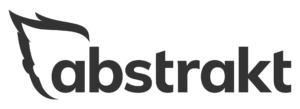

Finding the right talent is crucial for any successful business. The recruitment process isn’t just about filling positions; it’s about finding the perfect fit for both the company and the candidate. This journey includes steps to attract, evaluate, and hire top-notch candidates, directly impacting your company’s productivity, culture, and overall success.
A structured recruitment process is key for several reasons. It ensures consistency, fairness, and efficiency, making it easier to spot the best candidates. By following a clear plan, you can cut down on hiring time and costs while boosting your chances of finding high-quality hires.
Here’s an overview of the seven steps to successful recruiting:
Step 1: Define Job Requirements and Develop a Job Description
Clearly defining job roles and requirements is the foundation of a successful recruitment process. It ensures that both the recruiter and the candidates mutually understand the position’s expectations and responsibilities. This step involves identifying the skills, qualifications, and experience necessary for the role.
How To Create an Adequate Job Description
- Start with a clear job title: Use a title that accurately reflects the role and is commonly understood within the industry.
- Brief overview: Include a summary of the company and the role.
- List key responsibilities: Outline the main tasks and duties associated with the job.
- Specify required qualifications: Detail the necessary education, experience, and skills.
- Highlight desirable traits: Mention any additional qualities that would be beneficial but are not essential.
- Include logistical details: State the location, salary range, and other pertinent information.
Example: Crafting a Job Description for an IT Support Technician
- Job Title: IT Support Technician
- Overview: Join our dynamic IT team to provide technical support and assistance to our staff and ensure the smooth and efficient operation of our IT systems.
- Responsibilities:
- Respond to technical support requests via phone, email, and in person.
- Diagnose and troubleshoot hardware and software issues.
- Install, configure, and maintain computer systems and networks.
- Provide training and support to end-users
- Maintain documentation of technical procedures and solutions.
- Qualifications:
- Bachelor’s degree in Information Technology or related field
- 2+ years of experience in IT support or a similar role
- Proficiency in Windows and Mac operating systems
- Strong problem-solving skills and attention to detail
- Desirable Traits:
- Excellent communication skills
- Ability to work independently and as part of a team
- Location: New York, NY
- Salary Range: $50,000 – $60,000 per year
Step 2: Posting and Promoting Job Openings
Choosing the right job boards and platforms is crucial for reaching the best candidates. Different industries have preferred sites where top talent will likely search for opportunities. For example, LinkedIn is highly effective for professional services, while sites like ConstructionJobs.com are better suited for construction roles.
Strategies for promoting job openings:
- Identify target platforms: Use industry-specific job boards and general job sites like Indeed and Glassdoor.
- Leverage social media: Promote LinkedIn, Facebook, and Twitter openings to reach a broader audience.
- Engage with professional networks: Use industry associations, forums, and groups to share job postings.
- Optimize job postings: Use relevant keywords and compelling descriptions to improve search visibility and attract more applicants.
Utilizing LinkedIn and Industry-Specific Sites for Construction Roles
- LinkedIn: Post detailed job descriptions and share them through company and personal profiles. Engage with relevant industry groups and use LinkedIn’s job posting features to reach active job seekers and passive candidates.
- ConstructionJobs.com: Post job openings on this specialized platform to attract candidates with specific construction skills and experience. Utilize the site’s resume database to reach out to potential candidates proactively.
- Social Media: Share job postings on company pages and encourage employees to share within their networks to increase visibility.
- Job Aggregators: Use platforms like ZipRecruiter to distribute job postings across multiple job boards and increase exposure.
By strategically posting and promoting job openings, companies can attract a diverse pool of qualified candidates, enhancing the chances of finding the perfect fit for the role.
Step 3: Active Outreach to Passive Candidates
Passive candidates are individuals not actively seeking new job opportunities but may be open to the right offer. These candidates are often already employed and might be top performers in their current roles. Reaching out to passive candidates is crucial because it expands the talent pool beyond those actively applying for jobs, increasing the chances of finding highly qualified individuals who might not otherwise be available.
How to Engage Passive Candidates
- Leverage Professional Networks: Use platforms like LinkedIn to identify and connect with potential passive candidates.
- Build a Strong Employer Brand: Create a compelling company image that attracts top talent even when they aren’t actively looking for a job.
- Personalized Outreach: Tailor your communication to highlight how your company can meet their career goals and offer growth opportunities.
- Employee Referrals: Encourage current employees to refer top talent from their networks, which can include passive candidates who trust their peers’ recommendations.
Engaging passive candidates can significantly enhance your recruitment strategy by bringing in top-tier talent that might not be reachable through traditional job postings.
Step 4: Screening and Shortlisting Candidates
Once applications and expressions of interest start, the next step is to screen and shortlist candidates. This step is vital to ensure that only the most qualified candidates move forward in the recruitment process, saving time and resources.
Initial Screening Methods
- Resume Reviews: Assess resumes for relevant experience, education, and skills. Look for specific keywords related to the job description.
- Phone Interviews: Conduct brief interviews to gauge candidates’ communication skills, motivation, and cultural fit. Use a standardized set of questions to maintain consistency.
Criteria for Shortlisting Candidates
- Technical Skills: Ensure the candidate has the necessary technical skills required for the role.
- Experience: Look for relevant industry experience and past job performance.
- Cultural Fit: Assess whether the candidate’s values and work style align with the company’s culture.
- Availability: Check the candidate’s availability to start and willingness to relocate if necessary.
Example: Screening HVAC Technicians for Technical Skills and Cultural Fit
- Resume Review: Look for certifications such as EPA Section 608, relevant technical experience, and a history of reliability.
- Phone Interview Questions:
- Can you describe your experience with HVAC system installations and maintenance?
- How do you handle unexpected issues during a job?
- What do you consider necessary in customer service?
- Technical Assessment: Consider a brief technical test or practical assessment to validate their skills if applicable.
- Cultural Fit: Discuss scenarios that reflect your company’s values and gauge their responses to ensure alignment.
Step 5: Conducting Interviews
Conducting compelling interviews is a critical step in the recruitment process. It allows one to delve deeper into the candidates’ qualifications, assess their problem-solving abilities, and determine their fit within the team and company culture.
Best Practices for Conducting Effective Interviews
- Structured Interviews: Use a structured format with consistent questions for all candidates. This approach ensures fairness and makes it easier to compare candidates.
- Behavioral Questions: Focus on questions that require candidates to describe past behavior and experiences. Examples include:
- Tell me about a time when you faced a significant challenge at work. How did you handle it?
- Can you provide an example of how you worked effectively under pressure?
- Technical Questions: Ask role-specific questions to assess their technical abilities and problem-solving skills.
Techniques to Ensure a Positive Candidate Experience
- Timely Communication: Keep candidates informed about the interview process and timelines.
- Welcoming Environment: Create a comfortable and professional setting for the interview, whether in-person or virtual.
- Constructive Feedback: Provide candidates with feedback after the interview, which can improve their perception of your company, even if they are not selected.
Example: Interviewing Strategies for Facilities Management Roles
- Structured Questions:
- What experience do you have in managing facilities operations and maintenance?
- Describe a time when you had to manage an emergency. What actions did you take?
- Behavioral Questions:
- How do you prioritize tasks when managing multiple facilities?
- Give an example of how you improved efficiency in a previous role.
- Technical Questions:
- What systems do you have experience with (e.g., HVAC, electrical, plumbing)?
- How do you ensure compliance with safety regulations?
- Positive Candidate Experience:
- Ensure the interview panel is well-prepared and respectful of the candidate’s time.
- Provide clear instructions for the interview process, including virtual meeting links if applicable.
- Follow up promptly with the next steps or feedback, maintaining a professional and courteous tone.
By effectively conducting interviews and ensuring a positive candidate experience, companies can leave a lasting impression and increase their chances of securing top talent.
Step 6: Making the Offer
Extending a job offer is a big moment in the recruitment process—it’s your chance to secure the candidate you’ve been eyeing. A great job offer not only includes attractive compensation but also highlights the value and opportunities your company brings to the table.
Steps to Making a Compelling Job Offer
- Prepare the Offer Letter: Draft a formal offer letter that includes the job title, salary, benefits, start date, and any other relevant details.
- Highlight the Benefits: Emphasize not just the salary but also other perks such as health insurance, retirement plans, bonuses, professional development opportunities, and work-life balance initiatives.
- Personalize the Communication: Make the offer personal by acknowledging the candidate’s skills and how they will contribute to the company’s success. A personalized approach shows that you value the candidate’s unique qualities.
- Be Clear and Concise: Ensure all terms and conditions are clearly stated. Ambiguities can lead to misunderstandings and cause the candidate to reconsider.
Negotiation Tips and Considerations for Both Parties
- Be Open and Flexible: Be prepared for the candidate to negotiate aspects of the offer. Show willingness to discuss and adjust terms where possible.
- Understand Their Needs: Listen to the candidate’s priorities and try to accommodate them. This might include flexible working hours, remote options, or additional benefits.
- Stay Within Budget: While it’s essential to be flexible, ensure any adjustments remain within your budget and align with company policies.
- Communicate Clearly: Maintain clear and transparent communication throughout the negotiation process. This builds trust and shows professionalism.
Example: Making an Offer to a High-Demand IT Engineer
- Offer Letter: Include a competitive salary, sign-on bonus, and detailed benefits package.
- Highlight Opportunities: Emphasize the potential for growth within the company, access to cutting-edge technology, and opportunities for further training and certification.
- Personalize: Mention specific projects that align with the candidate’s interests and how their skills will make an impact.
- Negotiation: Be prepared to discuss additional stock options, flexible working arrangements, or relocation assistance if needed.
Step 7: Onboarding the New Hire
A well-structured onboarding process is critical for integrating new hires into the company. It sets the tone for their experience and significantly impacts their productivity and retention.
Importance of a Structured Onboarding Process
A structured onboarding process ensures that new hires can effectively start their roles. It helps them understand company culture, policies, and specific responsibilities, fostering a sense of belonging and boosting early engagement.
Steps to Ensure a Smooth Transition for the New Hire
- Pre-Start Preparation: Send welcome emails, company materials, and a detailed agenda for their first week.
- First-Day Orientation: Provide a comprehensive orientation session that includes a tour of the office (or virtual setup), an introduction to the team, and an overview of company policies and tools.
- Training and Mentorship: Assign a mentor or buddy to guide them through their initial period. Offer training sessions tailored to their role.
- Regular Check-ins: Schedule meetings to address concerns, provide feedback, and ensure they settle in nicely.
Example: Onboarding Process for a New Sales Representative in Professional Services
- Pre-Start: Send a welcome kit with company swag, a personalized welcome letter, and login details for necessary systems.
- First-Day Orientation: Conduct an in-depth orientation covering company history and culture and an introduction to the sales team and key stakeholders.
- Training Program: Provide comprehensive training on sales processes, tools (e.g., CRM systems), and product knowledge. Include role-playing sessions and shadowing experienced sales reps.
- Mentorship: Pair the new hire with a senior sales mentor who can provide ongoing support and guidance.
- Regular Check-ins: During the first month, hold weekly check-ins to address questions and ensure they are on track with their targets.
Key Takeaways
A structured recruitment process is essential for finding the perfect fit for both the company and the candidate. It ensures consistency, fairness, and efficiency, making it easier to attract, evaluate, and hire top talent. The seven crucial steps in this process include defining job requirements, posting and promoting job openings, active outreach to passive candidates, screening and shortlisting candidates, conducting interviews, making the offer, and onboarding the new hire. By following these steps, companies can reduce hiring time and costs, enhance candidate experiences, and improve overall productivity and employee retention. A well-defined recruitment process is the foundation of a successful hiring strategy.
Following a structured recruitment process streamlines hiring and boosts the quality of hires, reducing turnover and improving productivity. Contact Talent Solutions for customized recruitment solutions tailored to your industry. With our expertise, proactive strategies, and access to top career platforms, we can help you find passive candidates at below-market rates, ensuring your next hire is a perfect fit. Reach out today, and let’s elevate your hiring game!










